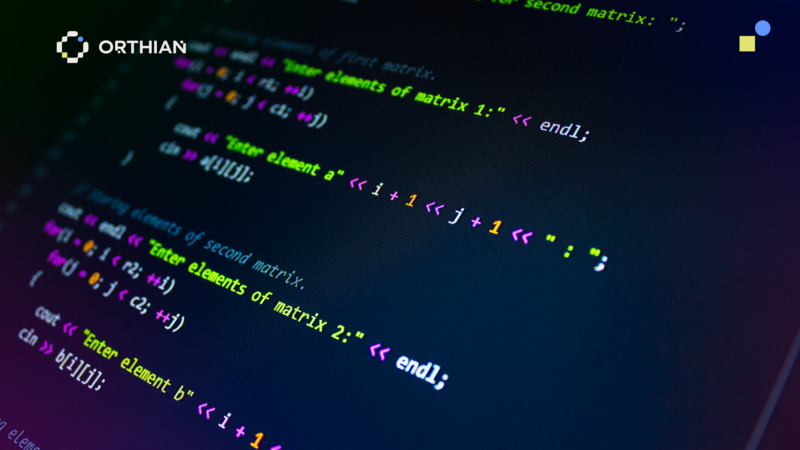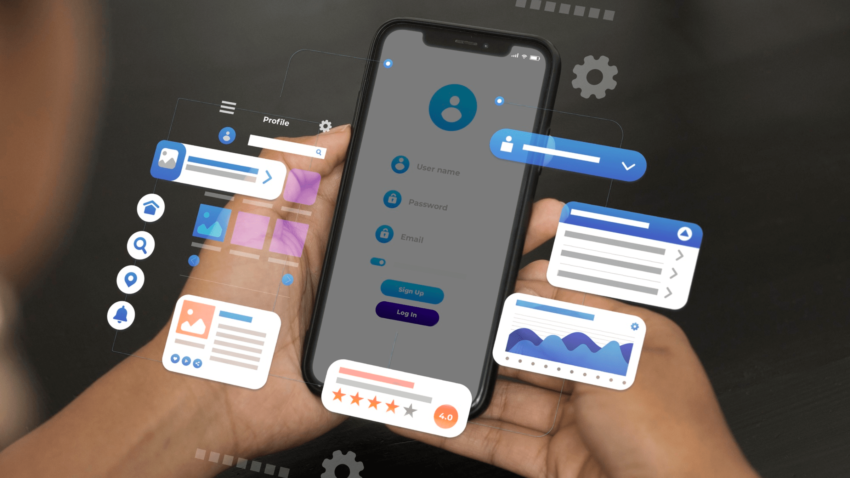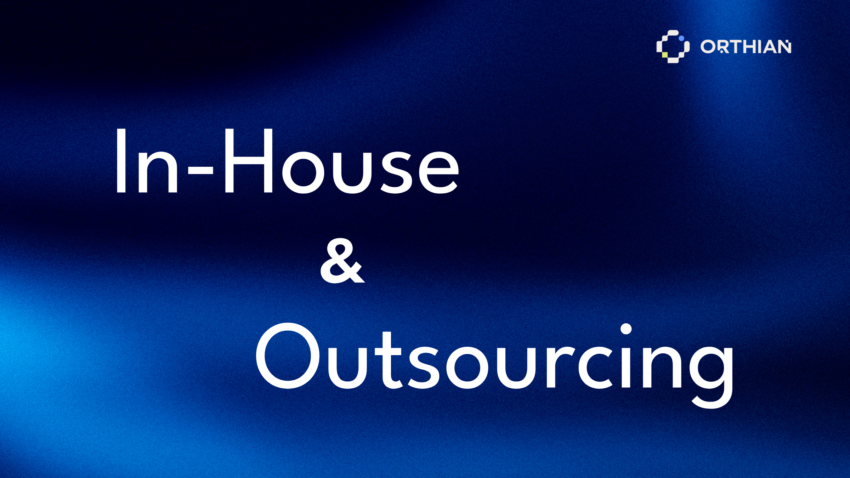Discover what Python is, how it works, where it’s used, and why it’s a go-to language for modern developers and digital solutions.
Python is everywhere. From powering Instagram’s backend to training machine learning models at Google, Python has quietly become the most versatile and beginner-friendly programming language in the world.
But what exactly is Python, and why should businesses and developers care? This article walks you through the fundamentals of Python, its applications, best practices, and how Orthian leverages it to build reliable, scalable digital products.
1. What Is Python?
Python is a high-level, interpreted programming language known for its simplicity, readability, and flexibility. Developed by Guido van Rossum and first released in 1991, Python emphasizes code clarity and productivity, making it a favorite among developers of all levels.
Python supports multiple programming paradigms, including procedural, object-oriented, and functional programming. It’s also open-source, backed by a massive global community.
Some popular Python frameworks and tools:
- Web: Django, Flask, FastAPI
- Data: Pandas, NumPy, Matplotlib
- AI/ML: TensorFlow, PyTorch, Scikit-learn
- DevOps: Ansible, Fabric
- Automation: Selenium, Script-based tasks
2. Core Concepts and Syntax in Python
Python is known for having one of the cleanest syntaxes among programming languages. Here are a few must-know elements:
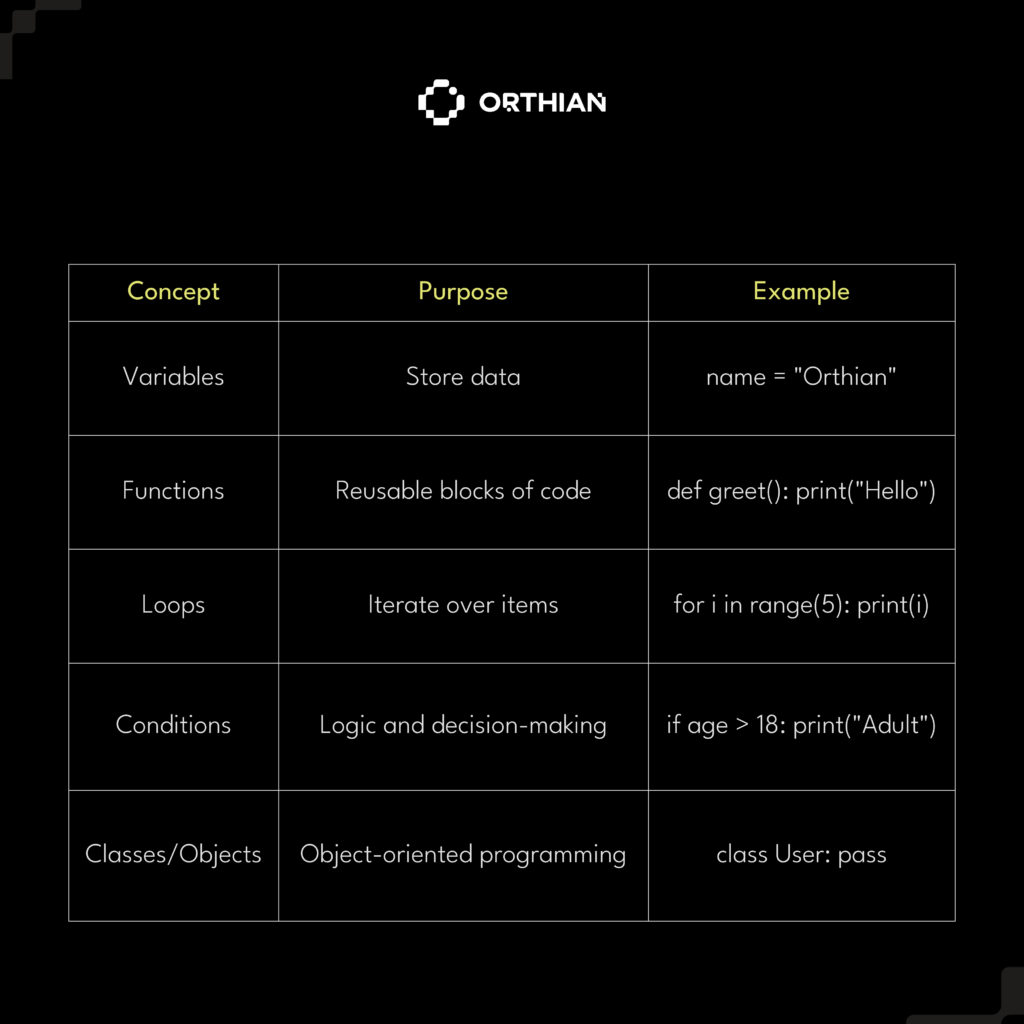
Python’s syntax is intuitive, making it perfect for rapid development and prototyping.
3. Where Is Python Used in the Real World?
Python’s versatility means it’s used across nearly every industry. Common use cases include:
- Data Analysis & Visualization: Business intelligence dashboards, real-time analytics
- Web Development: Backend APIs, content management systems, e-commerce
- Artificial Intelligence & Machine Learning: Model training, predictive analytics
- Automation & Scripting: System scripts, testing, CI/CD
- Finance & FinTech: Fraud detection, algorithmic trading
- Education: Teaching programming due to its clean syntax and low entry barrier
4. Python vs Other Languages
Python is often compared to Java, JavaScript, or C#. Here’s how it stacks up:
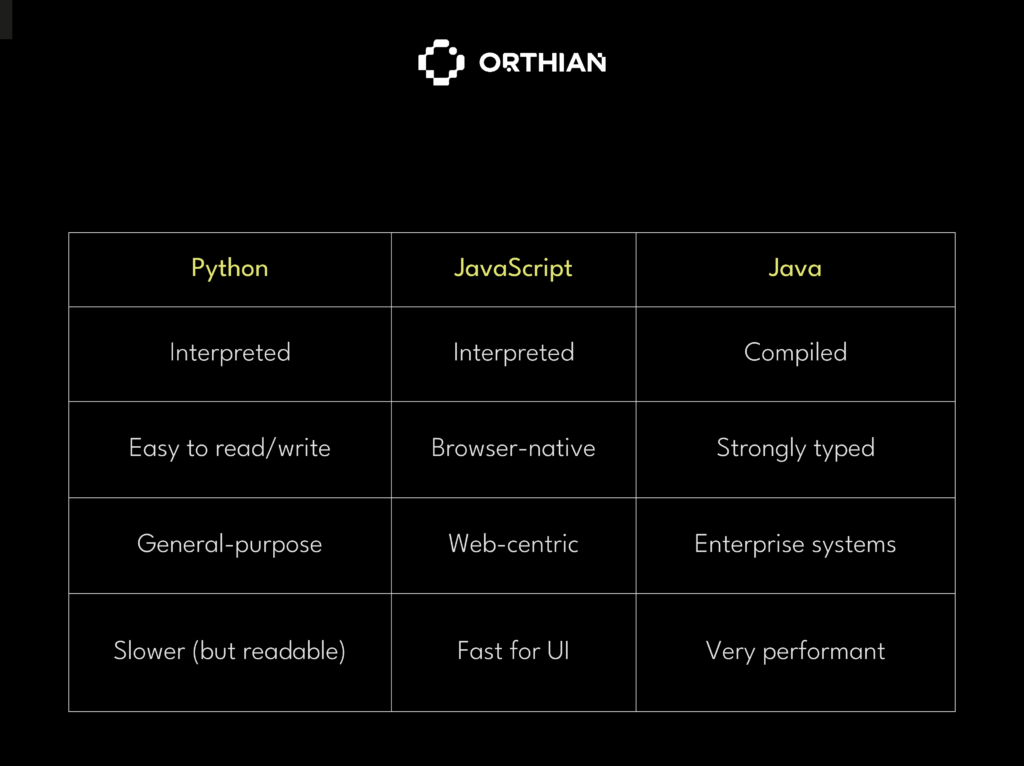
When to choose Python:
- When speed of development matters
- When working with data, AI, or automation
- When developer productivity is a priority
5. Best Practices for Using Python
To get the most out of Python in production environments, we recommend:
- Stick to the PEP 8 style guide
- Use virtual environments to manage dependencies (
venv,pipenv) - Apply modular design and reuse code
- Profile and optimize heavy tasks (e.g. using NumPy instead of pure Python loops)
- Leverage testing frameworks like
pytest
At Orthian, we maintain rigorous code quality standards while building Python-based systems that scale.
6. How Orthian Uses Python in Projects
Python is a foundational technology across many of Orthian’s projects. Its flexibility allows us to solve a variety of business problems quickly and effectively. Some examples include:
- API-driven platforms for internal tools and customer-facing services
- Data pipelines for enterprise analytics and visualization
- ML-based features for personalization and smart recommendations
- System automation for tasks like report generation, data sync, and monitoring
Python helps us iterate faster, test better, and deploy smarter key values in our product development lifecycle.
Conclusion
Whether you’re building a SaaS platform, automating internal operations, or integrating AI into your workflows, Python is an indispensable tool. It’s beginner-friendly, production-ready, and endlessly scalable.
At Orthian, we don’t just use Python, we design systems around it. From backend logic to smart analytics, we build with confidence, clarity, and performance in mind.
Check out more knowledge from Orthian below:
